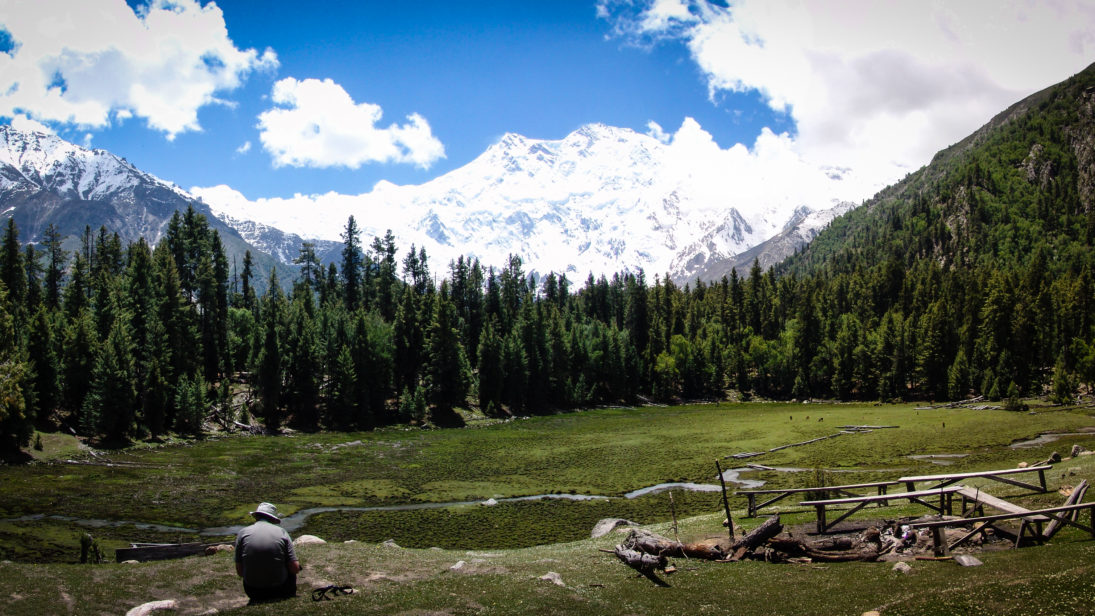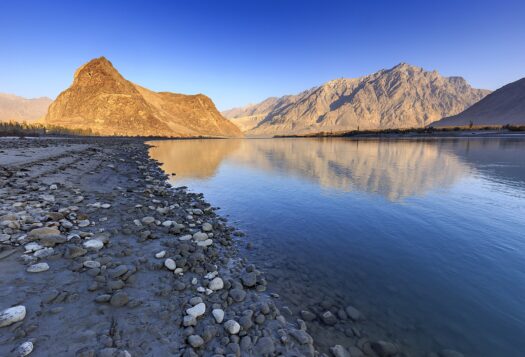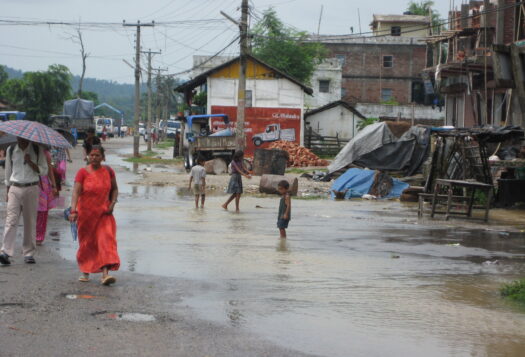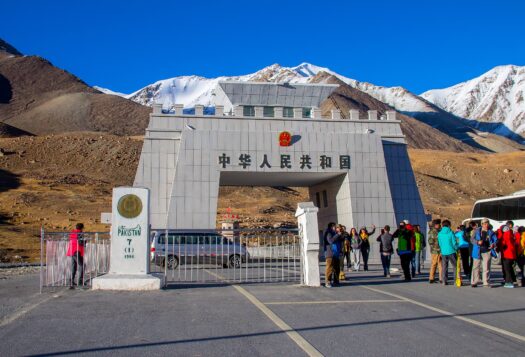
When the news of a rescue operation for three mountaineers on a K-2 winter expedition went viral online in February, it highlighted a striking theme for Pakistan: a lack of engagement with Pakistan’s mountaineering opportunities and the immense potential that tourism holds to change global perceptions about Pakistan.
While international perceptions about Pakistan over the past two decades have primarily emphasized its ties to terrorism, the country’s security situation has improved considerably. Investments in the tourism industry and in cultural diplomacy reflect this positive trajectory. Although instances such as the recent Tehreek-e-Labbaik protests suggest extremism’s footprint remains, investing further in tourism can both reallocate resources productively and enhance global awareness about Pakistan’s improving security situation. This is an important step in highlighting the many ways in which Pakistan is a tolerant country with a vibrant culture.
As a spillover, tourism produces economic growth. It enables revenue generation and creates employment opportunities. The potential benefits of tourism can only be fully realized if structural impediments are addressed. Officials in Pakistan must work to ease visa policies, introduce capacity-building trainings, and institute digital infrastructure to ensure safe and sustainable tourism.
New Narratives: Tourism’s Influence on Pakistan’s International Standing
Tourism helps direct international attention to Pakistan’s cultural diversity and emphasizes its improved security conditions. This trend becomes clear if one juxtaposes two mountaineering episodes. In 2013, a militant group at Nanga Parbat’s Base Camp murdered ten foreign mountaineers, leading to international coverage highlighting terrorism in Pakistan. This led to a plummet in the number of expeditions as popular opinion, even a year later, proclaimed Pakistan unsafe.
Officials in Pakistan must work to ease visa policies, introduce capacity-building trainings, and institute digital infrastructure to ensure safe and sustainable tourism.
In contrast, the mountaineering episode this February, although heartbreaking, contributed positively to Pakistan’s international image. The media headlines reflected such a change. The news of Pakistani mountaineer Ali Sadpara and two foreign climbers disappearing while scaling K-2 flooded the internet. International climbers like Mingma Sherpa described Sadpara as a world-class Pakistani climber and Britain’s high commissioner in Pakistan, Christian Turner, tweeted a tribute to him. As Pakistan celebrated Sadpara as a national hero, the incident helped boost its image as an attractive tourist destination.
Apart from mountaineering, religious tourism in Pakistan also serves as a catalyst for improving its global reputation. The most prominent example of this is the opening of the Kartarpur Corridor for the Sikh community in India to visit one of their holiest places, Gurdwara Darbar Sahib of Guru Nanak, in Pakistan. In response to the opening, Navjot Singh Sidhu, Indian cricketer-turned-politician, lauded Pakistani Prime Minister Imran Khan’s efforts; “you have won hearts.” The videos of Sikh pilgrims from India echoed the messages of love, peace, and appreciation of Pakistan’s hospitality.
Along with changing public opinion, religious tourism boosts bilateral relations by reflecting an openness towards a shared cultural heritage. In a recent Pakistan-Sri Lanka bilateral visit, Pakistan agreed to permit Sri Lankans to visit ancient Buddhist heritage sites in Pakistan, a move for which the Sri Lankan Prime Minister expressed his appreciation. Deepening diplomatic ties through tourism reiterates the role it plays in promoting an inclusive and progressive Pakistan.
Tourism’s Influence on Pakistan’s Economy
Beyond shaping narratives, Kartarpur and mountaineering tourism produce a ripple effect that promotes economic growth. Bourgeoning tourism translates into employment and revenue generation while attracting foreign direct investment. In terms of revenue generation, the Kartarpur corridor promised to generate a direct income of USD $36 million per annum. For every pilgrim visiting the Gurdwara via the Kartarpur corridor from India, there is a service charge of USD $20.
This boosted economic activity also has a multiplier effect on goods and services in the region. This is particularly relevant for tourist hubs in North Pakistan, where locals’ revenue generation depends on tourist activity. A report showed that if a person on average spends approximately USD $1.30 on a trip, it generates USD $350 million in revenue for the tourism industry per year, including through indirect expenditures like hotel and transport facilities.

Job creation is an obvious boon for the economy. Before the inauguration of the Kartarpur corridor, hundreds of laborers were employed for renovations. The in-operation site services provide sustainable employment opportunities for local people. In the mountaineering realm, climbing porter employments help locals sustain a living, especially given limited labor opportunities in North Pakistan.
Finally, tourism showcasing safe opportunities in Pakistan projects a positive image to foreign investors. Foreign investors have long shied away from investing in Pakistan due to its hostile security conditions and reputation as a state-sponsor of terror. While attracting foreign investment involves a myriad of challenges, including the business environment and tax regimes, a safer security environment could be one step in a long road towards improving investor confidence. This manifests, for instance, in the resumption of British Airways’ flights to Islamabad, previously suspended after the Marriott Hotel bombings.
A Double-Edged Sword
While tourism can help redefine the image of Pakistan and promise economic growth, there are structural impediments that may damage Pakistan’s reputation if left unaddressed.
Despite being an acknowledged climber, Ali Sadpara was climbing K-2 this February only as a high-altitude porter due to lack of sponsorship. This brought to the surface the financial constraints and lack of professional training locals in the mountaineering industry experience. Many porters climb dangerous peaks without the proper climbing equipment or professional training for trekking. In addition, while the government has liberalized the visa policies for foreign tourists, mountaineering experts argue that procuring a mountaineering permit for foreigners still takes a significant amount of time.
Parallel to investing in tourism, Pakistan must also work to address the underlying issues—including poverty and disenfranchisement—that feed extremism to build towards relinquishing its terror-sponsoring label.
If Pakistan seeks to capitalize on mountaineering to improve opportunities for locals and improve its international image, it must first establish policies for visas and training. For instance, introducing skilled training on tourism at the local level would ensure the prerequisite capacity-building for tourism. Easing visa policies would allow more foreign climbers to visit Pakistan and in turn help shift foreign perspectives. With proper training programs in place, Pakistan could expand mountaineering tourism by hosting expeditions on unclimbed peaks for local Pakistani climbers along with foreign climbers, developing Pakistan’s reputation as a mountaineering destination.
Tourism is suffering a major setback due to COVID-19 and innovative structural practices are critical. For instance, creating a digital mechanism of payments could ensure a safer interaction. The government could collaborate with already established mobile payment initiatives such as JazzCash to provide services in tourist hubs. And yet tourism alone cannot alter public opinion internationally if linkages to extremist ideologies remain. Parallel to investing in tourism, Pakistan must also work to address the underlying issues—including poverty and disenfranchisement—that feed extremism to build towards relinquishing its terror-sponsoring label.
While the international community has perceived Pakistan inevitably through the lens of its ties to terrorism, re-allocating funds towards tourism can help highlight the country’s improved security environment. Kartarpur and other cultural diplomacy initiatives emphasize Pakistan’s diverse religious and cultural heritage. Similarly, Ali Sadpara’s life story makes familiar to global citizens inspiring stories shared among millions of Pakistanis. Improved perceptions also translate into economic growth, increasing job opportunities, and raising tourism revenue. For Pakistan to continue to reap economic and diplomatic gains, the government needs to fully invest in the tourism industry and build new structures that enable further growth.
***
Click here to read this article in Urdu.
Image 1: Marc Ewert via Flickr
Image 2: Imran Khan via Twitter


